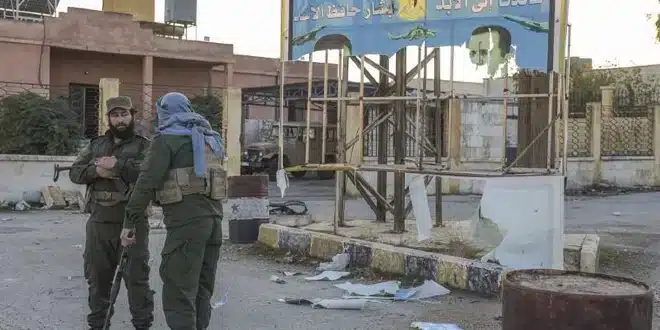On Friday, insurgents breached the western edge of Aleppo, Syria’s second-largest city, following the detonation of two car bombs. They clashed with government forces, marking the first attack on the city by opposition forces since 2016. That year, after months of intense fighting, Syrian government forces, supported by Russia, Iran, and allied groups, retook control of eastern Aleppo from opposition fighters.
Witnesses reported that residents near the western outskirts of the city fled their homes due to missile strikes and ongoing clashes. The Syrian government did not immediately respond to claims of insurgent forces entering the city. In a statement, the Syrian Armed Forces said they were engaged in fighting with insurgents in the surrounding areas of Aleppo and Idlib, where they claimed to have destroyed several drones and heavy weapons. The military pledged to repel the attack and accused the insurgents of spreading misinformation regarding their advances.
Since launching a surprise offensive on Wednesday, insurgent forces have been advancing toward Aleppo, capturing several towns and villages along the way. The offensive has come at a time when Iran-backed groups, who have supported the Syrian government since 2015, have been focused on their own domestic conflict.
The Syrian Observatory for Human Rights reported that two car bombs were detonated at Aleppo’s western edge on Friday. An insurgent commander shared a message on social media, urging Aleppo’s residents to cooperate with the advancing forces. Turkish news agency Anadolu reported that opposition forces entered Aleppo’s city center, breaking through defense lines in the Hamdaniyya, New Aleppo, and Zahra districts on the city’s outskirts. The insurgents now reportedly control around 70 locations in Aleppo and Idlib provinces.
State media in Syria reported that insurgent projectiles hit the student housing area at Aleppo University, killing four people, including two students. The authorities also diverted public transportation to avoid clashes along the main highway linking Aleppo to Damascus.
Insurgents also advanced toward the town of Saraqab in northwestern Idlib, a strategically important area that could secure supply lines to Aleppo. The insurgent offensive represents one of the largest operations by opposition factions, led by Hayat Tahrir al-Sham (HTS), in months and is the most intense fighting in northwestern Syria since 2020, when the Syrian government recaptured areas previously held by opposition forces.
The Syrian Armed Forces accused the insurgents of violating a 2019 ceasefire agreement that aimed to reduce violence in the region, the last major opposition stronghold in Syria. The Syrian Observatory reported that dozens of fighters from both sides have been killed since the clashes began on Wednesday, and insurgents have taken control of over 50 villages.
Meanwhile, Hezbollah, which has been a key ally of the Syrian government, has been engaged in its own conflict with Israel, which has escalated since September. A ceasefire was announced on the same day that the Syrian opposition factions launched their offensive.
Earlier on Friday, the insurgents claimed to have captured the Scientific Research Center neighborhood, located 4 kilometers from the western outskirts of Aleppo. However, government-linked media denied these claims. Insurgents also posted videos showing the use of drones in their assault, a new tactic that had not been employed earlier in the conflict.
Anadolu reported that insurgents used drones to attack a military airbase southeast of Aleppo, destroying a helicopter. They also seized weapons, depots, and military vehicles during their offensive.
Aid organizations have said that the fighting has displaced thousands of families and disrupted essential services. The insurgents have stated that their campaign aims to allow the return of displaced people who fled government bombardment in recent weeks.
The 2016 battle for Aleppo was a pivotal moment in the Syrian Civil War, marking a decisive victory for the Syrian government with the help of Russian and Iranian forces. Turkey has long been a supporter of opposition groups in northwestern Syria, while the United States has backed Kurdish forces fighting ISIS in the east of the country.


